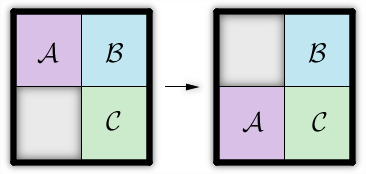- 【华为OD机试真题2023B卷 JAVA&JS】We Are A Team
若博豆
java算法华为javascript
华为OD2023(B卷)机试题库全覆盖,刷题指南点这里WeAreATeam时间限制:1秒|内存限制:32768K|语言限制:不限题目描述:总共有n个人在机房,每个人有一个标号(1<=标号<=n),他们分成了多个团队,需要你根据收到的m条消息判定指定的两个人是否在一个团队中,具体的:1、消息构成为:abc,整数a、b分别代
- 【华为OD技术面试真题 - 技术面】- python八股文真题题库(4)
算法大师
华为od面试python
华为OD面试真题精选专栏:华为OD面试真题精选目录:2024华为OD面试手撕代码真题目录以及八股文真题目录文章目录华为OD面试真题精选**1.Python中的`with`**用途和功能自动资源管理示例:文件操作上下文管理协议示例代码工作流程解析优点2.\_\_new\_\_和**\_\_init\_\_**区别__new____init__区别总结3.**切片(Slicing)操作**基本切片语法
- 【华为OD技术面试真题 - 技术面】-测试八股文真题题库(1)
算法大师
华为od面试python算法前端
华为OD面试真题精选专栏:华为OD面试真题精选目录:2024华为OD面试手撕代码真题目录以及八股文真题目录文章目录华为OD面试真题精选1.黑盒测试和白盒测试的区别2.假设我们公司现在开发一个类似于微信的软件1.0版本,现在要你测试这个功能:打开聊天窗口,输入文本,限制字数在200字以内。问你怎么提取测试点。功能测试性能测试安全性测试可用性测试跨平台兼容性测试网络环境测试3.接口测试的工具你了解哪些
- ARM驱动学习之5 LEDS驱动
JT灬新一
嵌入式C底层arm开发学习单片机
ARM驱动学习之5LEDS驱动知识点:•linuxGPIO申请函数和赋值函数–gpio_request–gpio_set_value•三星平台配置GPIO函数–s3c_gpio_cfgpin•GPIO配置输出模式的宏变量–S3C_GPIO_OUTPUT注意点:DRIVER_NAME和DEVICE_NAME匹配。实现步骤:1.加入需要的头文件://Linux平台的gpio头文件#include//三
- 【华为OD技术面试真题 - 技术面】- python八股文真题题库(1)
算法大师
华为od面试python
华为OD面试真题精选专栏:华为OD面试真题精选目录:2024华为OD面试手撕代码真题目录以及八股文真题目录文章目录华为OD面试真题精选1.数据预处理流程数据预处理的主要步骤工具和库2.介绍线性回归、逻辑回归模型线性回归(LinearRegression)模型形式:关键点:逻辑回归(LogisticRegression)模型形式:关键点:参数估计与评估:3.python浅拷贝及深拷贝浅拷贝(Shal
- 2021 CCF 非专业级别软件能力认证第一轮(CSP-J1)入门级C++语言试题 (第三大题:完善程序 代码)
mmz1207
c++csp
最近有一段时间没更新了,在准备CSP考试,请大家见谅。(1)有n个人围成一个圈,依次标号0到n-1。从0号开始,依次0,1,0,1...交替报数,报到一的人离开,直至圈中剩最后一个人。求最后剩下的人的编号。#includeusingnamespacestd;intf[1000010];intmain(){intn;cin>>n;inti=0,cnt=0,p=0;while(cnt#includeu
- 【2022 CCF 非专业级别软件能力认证第一轮(CSP-J1)入门级 C++语言试题及解析】
汉子萌萌哒
CCFnoi算法数据结构c++
一、单项选择题(共15题,每题2分,共计30分;每题有且仅有一个正确选项)1.以下哪种功能没有涉及C++语言的面向对象特性支持:()。A.C++中调用printf函数B.C++中调用用户定义的类成员函数C.C++中构造一个class或structD.C++中构造来源于同一基类的多个派生类题目解析【解析】正确答案:AC++基础知识,面向对象和类有关,类又涉及父类、子类、继承、派生等关系,printf
- HarmonyOS Next鸿蒙扫一扫功能实现
JohnLiu_
HarmonyOSNextharmonyos华为扫一扫鸿蒙
直接使用的是华为官方提供的api,封装成一个工具类方便调用。import{common}from'@kit.AbilityKit';import{scanBarcode,scanCore}from'@kit.ScanKit';exportnamespaceScanUtil{exportasyncfunctionstartScan(context:common.Context):Promise{if
- ansible的安装、使用
ytym00
简介高度模块化,调用特定的模块,完成特定的任务,基于Yaml,来完成批量任务的模板化,来支持playbook。基于Python语言实现,主要使用Paramiko、PyYAML和JinJa2三个关键模块,部署简单(agentless),主从模式,支持自定义模块,支持playbook,幂等性:允许重复执行N次,没有变化时,只会执行第一次。特点:1、Configuration(cfengine,chef
- Codeforces Round 972 (Div. 2) A-C 题解
AKDreamer_HeXY
Codeforces比赛题解c++算法动态规划数据结构贪心算法
本来以为B2难度会1900什么的,结果感觉1200还没有,先做的B1,后悔了QwQ关于我现场没切出C这件事……现场排名:A.SimplePalindrome题意构造一个长度为nnn的字符串,只包含aeiou五种字母,需要使得构造出来的字符串所包含的回文子序列数量最小思路当n≤5n\le5n≤5时,只要555个字母不重复出现都是最优情况当n>5n>5n>5时,可以证明:把相同字母放在一起是最优情况:
- 2021年化工自动化控制仪表考试及化工自动化控制仪表考试技巧
女王219
安全生产模拟考试一点通安全生产一点通题库
题库来源:安全生产模拟考试一点通公众号小程序化工自动化控制仪表考试参考答案及化工自动化控制仪表考试试题解析是安全生产模拟考试一点通题库老师及化工自动化控制仪表操作证已考过的学员汇总,相对有效帮助化工自动化控制仪表考试技巧学员顺利通过考试。1、【单选题】辐射传热()任何介质做媒介。(A)A、不需要B、需要C、有时需要2、【单选题】同一密度的液体深度越深,压强()。(B)A、越小B、越大C、基本不变3
- 美团一面
Redstone Monstrosity
前端面试
1.为什么代码输出顺序是这样的?请尽可能详细地解释原理和过程。asyncfunctionasync1(){console.log('async1start');awaitasync2();console.log('async1end')}asyncfunctionasync2(){console.log('async2')}console.log('scriptstart');async1();c
- Makefile问答之 04 优化异常与警告设置
捕鲸叉
Linux使用Linux系统编程Makefilelinux
Makefile怎样指定优化选项,包括编译和链接优化,常用的选项有哪些?在Makefile中,你可以通过设置编译器和链接器的选项来指定优化选项。优化选项可以分为编译优化和链接优化,以下是如何在Makefile中指定这些选项,以及一些常用的选项。示例Makefile#编译器CC=gcc#编译选项CFLAGS=-Wall-O2#链接选项LDFLAGS=-O2#需要链接的库LDLIBS=#目标文件TAR
- python-pcl函数_Python简介,第4章-函数
cumei1658
javawebglpythonluaios
python-pcl函数Runningthroughthedoor,Baldricfoundhimselfinanenormouscavern,itsceilinglostinshadow.Greatcolumnsofblackstonesoaredfromtheground,andpoolsoflavabubbledthroughout,lightingthecaverninadarkred.T
- ComfyUI中的sam模型国内下载方法
jayli517
ComfyUIpythonstablediffusion
was-node-suite-comfyui这个节点安装的时候,有它内部的config配置文件,里面其实给了一些下载地址,配置文件里是这么写的:"sam_model_vith_url":"https://dl.fbaipublicfiles.com/segment_anything/sam_vit_h_4b8939.pth","sam_model_vitl_url":"https://dl.fba
- 相对与绝对路径、命令:cd、mkdir、rmdir、rm
强出头
2.6相对和绝对路径绝对路径:都是从根目录/开始的就是绝对路径,无论在任何目录下都能通过该路径找到该文件相对路径:不是以根目录开头的,相对当前目录的路径[root@mylinuxetc]#cat/etc/sysconfig/network-scripts/ifcfg-ens33(这里我们使用绝对路径查看文件ifcfg-ens33)[root@mylinuxetc]#cd/etc/sysconfig
- 华为USG6000E-S12防火墙Key exchange failed.无法SSH解决方案
redmond88
网络技术ssh华为运维
由于目前防火墙算法太新,导致crt和xshell的版本无法登陆,按以下方法解决一、下载华为本地加载除弱安全算法组件包之外的组件包https://download.csdn.net/download/redmond88/89620664?spm=1001.2014.3001.5503二、先改后缀名为.cfg,上传文件到防火墙三、在用户视图下改后缀名为.mod四、move文件到$_install_mo
- Xilinx 7系列FPGA架构之器件配置(二)
FPGA技术实战
FPGA器件架构XinxFPGA硬件设计fpga开发
引言:本文我们介绍下7系列FPGA的配置接口,在进行硬件电路图设计时,这也是我们非常关心的内容,本文主要介绍配置模式的选择、配置管脚定义以及如何选择CFGBVS管脚电压及Bank14/15电压。1.概述Xilinx®7系列设备有五个配置接口。每个配置接口对应一个或多个配置模式和总线宽度,如表1所示。有关接口详细的时序信息,可以参阅相应的7系列FPGA数据手册。配置时序主要与FPGA配置时钟管脚CC
- Codeforces Round 969 (Div. 2) C. Dora and C++ (裴蜀定理)
致碑前繁花
刷题记录c语言c++开发语言
什么?竟然是裴蜀定理。。。由于这里给出了a和b两个数,我们或许可以想到使用同样是需要给出两个定值的裴蜀定理,即:如果给定xxx和yyy,那么一定有ax+by=gcd(x,y)ax+by=gcd(x,y)ax+by=gcd(x,y)。所以在这时候我们就可以让输入的所有数都去对gcd(a,b)gcd(a,b)gcd(a,b)取模,这样就能够得到所有数的最简形式(可以当成是让所有数尽可能消去aaa和bb
- 洛谷水题 记录
木木ainiks
算法c++数据结构
P1093[NOIP2007普及组]奖学金sort排序即可注意cmp的写法#include#includeusingnamespacestd;structnode{intid;intchinese;intmath;intenglish;intcount;}a[305];intcmp(node&a,node&b){if(a.count!=b.count){returna.count>b.count;
- prometheus中step或resolution的含义
iceman1952
prometheus
prometheus官方文档对resolution的解释真是语焉不详,只有下面寥寥几句话Queryingexamples|PrometheusSubqueryReturnthe5-minuterateofthehttp_requests_totalmetricforthepast30minutes,witharesolutionof1minute.rate(http_requests_total[
- Error - cannot open input file /postproc/nlscfg.inf 错误解决
技术无疆
WindowsCEinputfilecommandwindows
执行makeimg命令的时候出现一下错误:makeimg:Creatingnlscfg.outbecausenlscfg.infdoesn'texist.makeimg:runcommand:fmerge-nlsnlscfg.outnlscfg.infError-cannotopeninputfile/postproc/nlscfg.inffmergeforWindowsCE(Release)(B
- Linux网络服务配置:从基础到高级
M78NB666
linux运维服务器
一、网络服务配置基础1.网络接口配置Linux系统中,网络接口的配置通常通过/etc/network/interfaces文件(Debian/Ubuntu)或/etc/sysconfig/network-scripts/ifcfg-文件(RedHat/CentOS)来完成。配置内容包括IP地址、子网掩码、网关等。2.DNS配置DNS配置通常在/etc/resolv.conf文件中设置,包括指定DN
- 七月宁乡诗花九朵
周柯楠
七月宁乡诗花九朵NinePoeticFlowersinJulyatNingxiang中文|白鹤清泉(BaiheQingquan)英译|周柯楠(ZhouKenan)1)萤火虫Firefly夏天的夜晚你们都提着一盏灯照亮自己无视黑暗OnsummernightsYouallcarryalampToilluminateyourselfandignorethedarkness我的眼睛跟着你们起舞东瞧瞧西逛逛
- 文件大小自动转换工具类
小卡车555
java
根据传入的文件大小,自动转换为B、KB、MB、GB、TBimportjava.text.DecimalFormat;publicclassFileSizeUtil{/***文件单位*/privatestaticfinalString[]units=newString[]{"B","KB","MB","GB","TB"};/***文件大小自动转换*@paramsize*@return*/public
- R语言标准普尔500指数Garch(1,1)模型
ronghuilin
一、例3.3标准普尔500指数的月超额收益率,从1926年开始,共792个观察值,如图所示。记rt为超额收益率,rt的样本ACF和rt2的样本PACF。在间隔为1,3时有少许序列相关性,但主要特征是平方序列显示的强烈线性相关性。例题建立garch(1,1)模型的过程:(1)应用arma(p,q)模型消除数据的线性依赖(2)在arma(p,q)模型基础上,建立garch(1,1)模型(3)改进g
- C++多线程的简单使用
好学松鼠
C++C++多线程asyncpromise
多线程的使用,本文主要简单介绍使用多线程的几种方式,并使用几个简单的例子来介绍多线程,使用编译器为visualstudio。一、AsyncFuture使用的知识点有std::async和std::future1、std::async函数原型templatefuture::type>async(launchpolicy,Fn&&fn,Args&&...args);功能:第二个参数接收一个可调用对象(
- FloatActionButton 使用
yuzhiyi_宇
FloatActionButton(简称FAB)是负责显示界面基本操作的圆形按钮,其提供的最好是高频率的操作。使用FloatActionButton继承自ImageView,具备ImageView的全部属性。xml布局代码属性作用android:srcFAB中显示的图标app:layout_anchor设置FAB的锚点,即以该控件为参考app:layout_anchorGravityFAB相对锚点
- 天猫超市优惠劵领取入口,淘宝各大活动优惠渠道分享
氧惠全网优惠
天猫榜单是在手机天猫里面的精选商品查看,会有每天的销售榜单,每天更新实时好物,对于经常网购者来说很有参考价值,今天把优惠的渠道入口分享给大家,并奉上天猫的各种活动优惠入口;复制下条整条口令,打开淘宝就可以直达优惠会场!1、联盟热卖榜单会场€5bSodSvCfWX€2、天猫超市-首页,优质爆款天天抢€QvwYdSvCgNP€3、超级U选,精选爆款,官方补贴€QlSvdSvCe22€4、【百亿补贴】真
- Linux学习-Ansible(一)
丢爸
Linuxlinux学习ansible
环境-Rocky-Linux8.6安装部署Ansible#安装ansible[root@harboransible]#dnfinstall-yansible-core#查看安装信息[root@harboransible]#ansible-doc--versionansible-doc[core2.12.2]configfile=/root/ansible/ansible.cfgconfigured
- 分享100个最新免费的高匿HTTP代理IP
mcj8089
代理IP代理服务器匿名代理免费代理IP最新代理IP
推荐两个代理IP网站:
1. 全网代理IP:http://proxy.goubanjia.com/
2. 敲代码免费IP:http://ip.qiaodm.com/
120.198.243.130:80,中国/广东省
58.251.78.71:8088,中国/广东省
183.207.228.22:83,中国/
- mysql高级特性之数据分区
annan211
java数据结构mongodb分区mysql
mysql高级特性
1 以存储引擎的角度分析,分区表和物理表没有区别。是按照一定的规则将数据分别存储的逻辑设计。器底层是由多个物理字表组成。
2 分区的原理
分区表由多个相关的底层表实现,这些底层表也是由句柄对象表示,所以我们可以直接访问各个分区。存储引擎管理分区的各个底层
表和管理普通表一样(所有底层表都必须使用相同的存储引擎),分区表的索引只是
- JS采用正则表达式简单获取URL地址栏参数
chiangfai
js地址栏参数获取
GetUrlParam:function GetUrlParam(param){
var reg = new RegExp("(^|&)"+ param +"=([^&]*)(&|$)");
var r = window.location.search.substr(1).match(reg);
if(r!=null
- 怎样将数据表拷贝到powerdesigner (本地数据库表)
Array_06
powerDesigner
==================================================
1、打开PowerDesigner12,在菜单中按照如下方式进行操作
file->Reverse Engineer->DataBase
点击后,弹出 New Physical Data Model 的对话框
2、在General选项卡中
Model name:模板名字,自
- logbackのhelloworld
飞翔的马甲
日志logback
一、概述
1.日志是啥?
当我是个逗比的时候我是这么理解的:log.debug()代替了system.out.print();
当我项目工作时,以为是一堆得.log文件。
这两天项目发布新版本,比较轻松,决定好好地研究下日志以及logback。
传送门1:日志的作用与方法:
http://www.infoq.com/cn/articles/why-and-how-log
上面的作
- 新浪微博爬虫模拟登陆
随意而生
新浪微博
转载自:http://hi.baidu.com/erliang20088/item/251db4b040b8ce58ba0e1235
近来由于毕设需要,重新修改了新浪微博爬虫废了不少劲,希望下边的总结能够帮助后来的同学们。
现行版的模拟登陆与以前相比,最大的改动在于cookie获取时候的模拟url的请求
- synchronized
香水浓
javathread
Java语言的关键字,可用来给对象和方法或者代码块加锁,当它锁定一个方法或者一个代码块的时候,同一时刻最多只有一个线程执行这段代码。当两个并发线程访问同一个对象object中的这个加锁同步代码块时,一个时间内只能有一个线程得到执行。另一个线程必须等待当前线程执行完这个代码块以后才能执行该代码块。然而,当一个线程访问object的一个加锁代码块时,另一个线程仍然
- maven 简单实用教程
AdyZhang
maven
1. Maven介绍 1.1. 简介 java编写的用于构建系统的自动化工具。目前版本是2.0.9,注意maven2和maven1有很大区别,阅读第三方文档时需要区分版本。 1.2. Maven资源 见官方网站;The 5 minute test,官方简易入门文档;Getting Started Tutorial,官方入门文档;Build Coo
- Android 通过 intent传值获得null
aijuans
android
我在通过intent 获得传递兑现过的时候报错,空指针,我是getMap方法进行传值,代码如下 1 2 3 4 5 6 7 8 9
public
void
getMap(View view){
Intent i =
- apache 做代理 报如下错误:The proxy server received an invalid response from an upstream
baalwolf
response
网站配置是apache+tomcat,tomcat没有报错,apache报错是:
The proxy server received an invalid response from an upstream server. The proxy server could not handle the request GET /. Reason: Error reading fr
- Tomcat6 内存和线程配置
BigBird2012
tomcat6
1、修改启动时内存参数、并指定JVM时区 (在windows server 2008 下时间少了8个小时)
在Tomcat上运行j2ee项目代码时,经常会出现内存溢出的情况,解决办法是在系统参数中增加系统参数:
window下, 在catalina.bat最前面
set JAVA_OPTS=-XX:PermSize=64M -XX:MaxPermSize=128m -Xms5
- Karam与TDD
bijian1013
KaramTDD
一.TDD
测试驱动开发(Test-Driven Development,TDD)是一种敏捷(AGILE)开发方法论,它把开发流程倒转了过来,在进行代码实现之前,首先保证编写测试用例,从而用测试来驱动开发(而不是把测试作为一项验证工具来使用)。
TDD的原则很简单:
a.只有当某个
- [Zookeeper学习笔记之七]Zookeeper源代码分析之Zookeeper.States
bit1129
zookeeper
public enum States {
CONNECTING, //Zookeeper服务器不可用,客户端处于尝试链接状态
ASSOCIATING, //???
CONNECTED, //链接建立,可以与Zookeeper服务器正常通信
CONNECTEDREADONLY, //处于只读状态的链接状态,只读模式可以在
- 【Scala十四】Scala核心八:闭包
bit1129
scala
Free variable A free variable of an expression is a variable that’s used inside the expression but not defined inside the expression. For instance, in the function literal expression (x: Int) => (x
- android发送json并解析返回json
ronin47
android
package com.http.test;
import org.apache.http.HttpResponse;
import org.apache.http.HttpStatus;
import org.apache.http.client.HttpClient;
import org.apache.http.client.methods.HttpGet;
import
- 一份IT实习生的总结
brotherlamp
PHPphp资料php教程php培训php视频
今天突然发现在不知不觉中自己已经实习了 3 个月了,现在可能不算是真正意义上的实习吧,因为现在自己才大三,在这边撸代码的同时还要考虑到学校的功课跟期末考试。让我震惊的是,我完全想不到在这 3 个月里我到底学到了什么,这是一件多么悲催的事情啊。同时我对我应该 get 到什么新技能也很迷茫。所以今晚还是总结下把,让自己在接下来的实习生活有更加明确的方向。最后感谢工作室给我们几个人这个机会让我们提前出来
- 据说是2012年10月人人网校招的一道笔试题-给出一个重物重量为X,另外提供的小砝码重量分别为1,3,9。。。3^N。 将重物放到天平左侧,问在两边如何添加砝码
bylijinnan
java
public class ScalesBalance {
/**
* 题目:
* 给出一个重物重量为X,另外提供的小砝码重量分别为1,3,9。。。3^N。 (假设N无限大,但一种重量的砝码只有一个)
* 将重物放到天平左侧,问在两边如何添加砝码使两边平衡
*
* 分析:
* 三进制
* 我们约定括号表示里面的数是三进制,例如 47=(1202
- dom4j最常用最简单的方法
chiangfai
dom4j
要使用dom4j读写XML文档,需要先下载dom4j包,dom4j官方网站在 http://www.dom4j.org/目前最新dom4j包下载地址:http://nchc.dl.sourceforge.net/sourceforge/dom4j/dom4j-1.6.1.zip
解开后有两个包,仅操作XML文档的话把dom4j-1.6.1.jar加入工程就可以了,如果需要使用XPath的话还需要
- 简单HBase笔记
chenchao051
hbase
一、Client-side write buffer 客户端缓存请求 描述:可以缓存客户端的请求,以此来减少RPC的次数,但是缓存只是被存在一个ArrayList中,所以多线程访问时不安全的。 可以使用getWriteBuffer()方法来取得客户端缓存中的数据。 默认关闭。 二、Scan的Caching 描述: next( )方法请求一行就要使用一次RPC,即使
- mysqldump导出时出现when doing LOCK TABLES
daizj
mysqlmysqdump导数据
执行 mysqldump -uxxx -pxxx -hxxx -Pxxxx database tablename > tablename.sql
导出表时,会报
mysqldump: Got error: 1044: Access denied for user 'xxx'@'xxx' to database 'xxx' when doing LOCK TABLES
解决
- CSS渲染原理
dcj3sjt126com
Web
从事Web前端开发的人都与CSS打交道很多,有的人也许不知道css是怎么去工作的,写出来的css浏览器是怎么样去解析的呢?当这个成为我们提高css水平的一个瓶颈时,是否应该多了解一下呢?
一、浏览器的发展与CSS
- 《阿甘正传》台词
dcj3sjt126com
Part Ⅰ:
《阿甘正传》Forrest Gump经典中英文对白
Forrest: Hello! My names Forrest. Forrest Gump. You wanna Chocolate? I could eat about a million and a half othese. My momma always said life was like a box ochocol
- Java处理JSON
dyy_gusi
json
Json在数据传输中很好用,原因是JSON 比 XML 更小、更快,更易解析。
在Java程序中,如何使用处理JSON,现在有很多工具可以处理,比较流行常用的是google的gson和alibaba的fastjson,具体使用如下:
1、读取json然后处理
class ReadJSON
{
public static void main(String[] args)
- win7下nginx和php的配置
geeksun
nginx
1. 安装包准备
nginx : 从nginx.org下载nginx-1.8.0.zip
php: 从php.net下载php-5.6.10-Win32-VC11-x64.zip, php是免安装文件。
RunHiddenConsole: 用于隐藏命令行窗口
2. 配置
# java用8080端口做应用服务器,nginx反向代理到这个端口即可
p
- 基于2.8版本redis配置文件中文解释
hongtoushizi
redis
转载自: http://wangwei007.blog.51cto.com/68019/1548167
在Redis中直接启动redis-server服务时, 采用的是默认的配置文件。采用redis-server xxx.conf 这样的方式可以按照指定的配置文件来运行Redis服务。下面是Redis2.8.9的配置文
- 第五章 常用Lua开发库3-模板渲染
jinnianshilongnian
nginxlua
动态web网页开发是Web开发中一个常见的场景,比如像京东商品详情页,其页面逻辑是非常复杂的,需要使用模板技术来实现。而Lua中也有许多模板引擎,如目前我在使用的lua-resty-template,可以渲染很复杂的页面,借助LuaJIT其性能也是可以接受的。
如果学习过JavaEE中的servlet和JSP的话,应该知道JSP模板最终会被翻译成Servlet来执行;而lua-r
- JZSearch大数据搜索引擎
颠覆者
JavaScript
系统简介:
大数据的特点有四个层面:第一,数据体量巨大。从TB级别,跃升到PB级别;第二,数据类型繁多。网络日志、视频、图片、地理位置信息等等。第三,价值密度低。以视频为例,连续不间断监控过程中,可能有用的数据仅仅有一两秒。第四,处理速度快。最后这一点也是和传统的数据挖掘技术有着本质的不同。业界将其归纳为4个“V”——Volume,Variety,Value,Velocity。大数据搜索引
- 10招让你成为杰出的Java程序员
pda158
java编程框架
如果你是一个热衷于技术的
Java 程序员, 那么下面的 10 个要点可以让你在众多 Java 开发人员中脱颖而出。
1. 拥有扎实的基础和深刻理解 OO 原则 对于 Java 程序员,深刻理解 Object Oriented Programming(面向对象编程)这一概念是必须的。没有 OOPS 的坚实基础,就领会不了像 Java 这些面向对象编程语言
- tomcat之oracle连接池配置
小网客
oracle
tomcat版本7.0
配置oracle连接池方式:
修改tomcat的server.xml配置文件:
<GlobalNamingResources>
<Resource name="utermdatasource" auth="Container"
type="javax.sql.DataSou
- Oracle 分页算法汇总
vipbooks
oraclesql算法.net
这是我找到的一些关于Oracle分页的算法,大家那里还有没有其他好的算法没?我们大家一起分享一下!
-- Oracle 分页算法一
select * from (
select page.*,rownum rn from (select * from help) page
-- 20 = (currentPag
